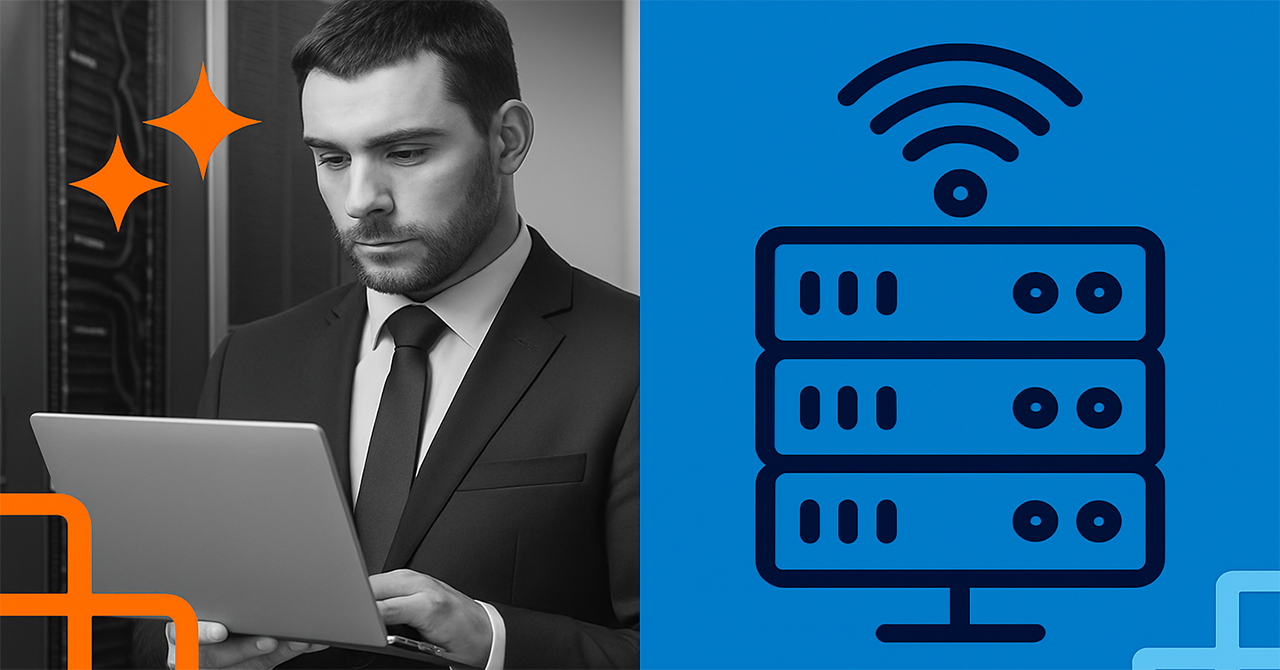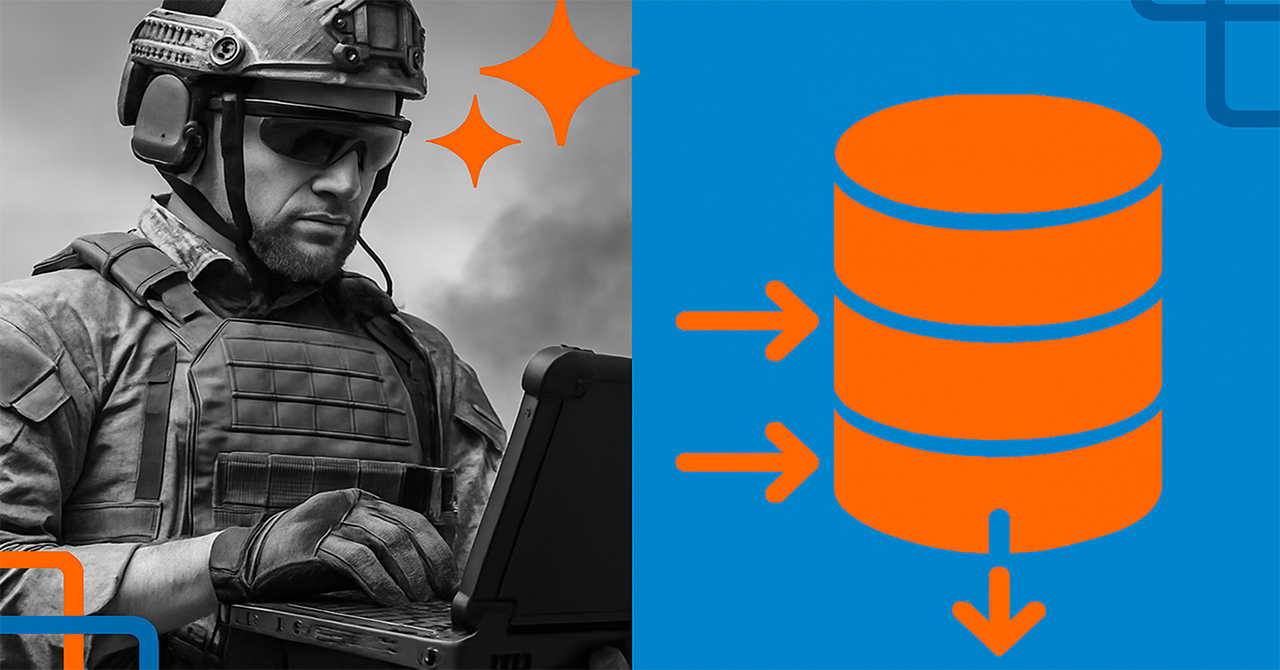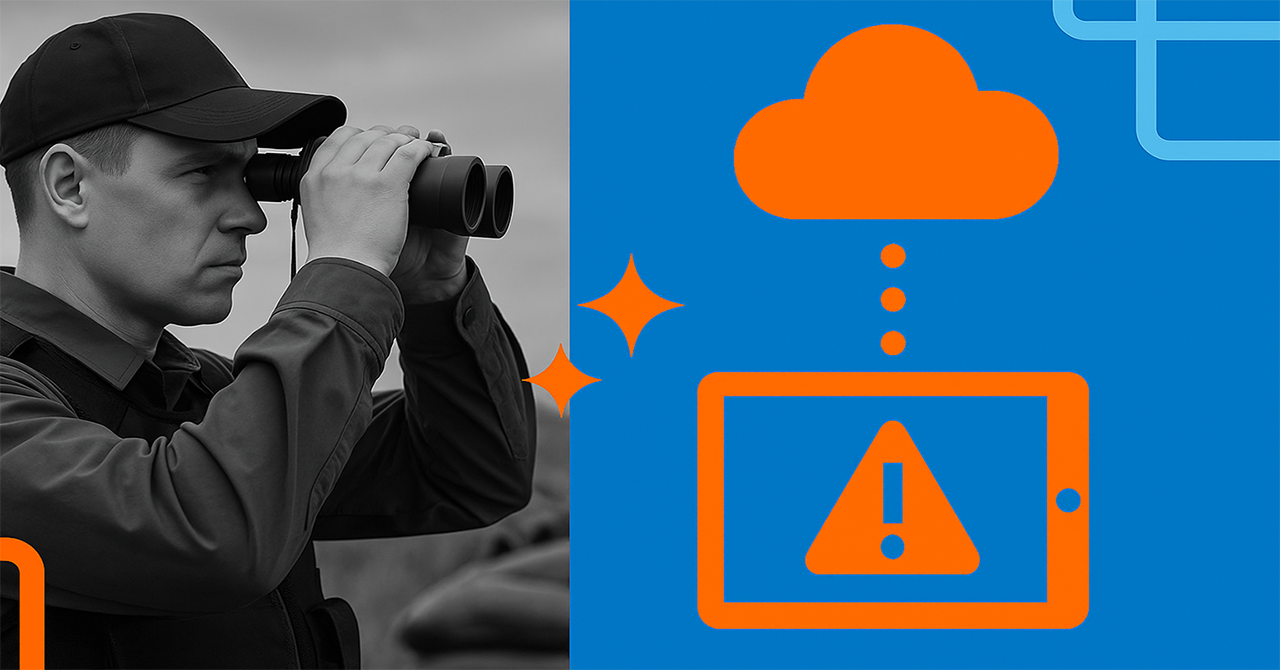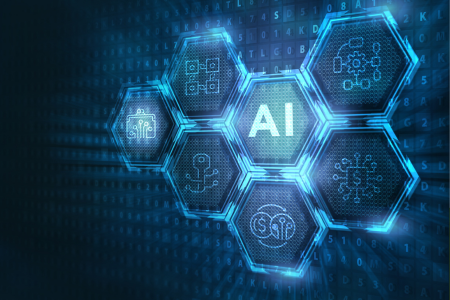As cyber threats continue to evolve and data breaches make headlines daily, organizations are seeking innovative approaches to enhance their security. While traditional cloud computing has dominated the digital transformation landscape, a new paradigm is emerging that fundamentally changes how we think about data security: edge computing.
Edge computing represents a shift from centralized data processing to a distributed model where computing power is moved closer to where data is generated and consumed. This architectural change brings significant security advantages that are reshaping how organizations protect their most sensitive information.
The security advantages of edge computing extend far beyond simple data protection. By processing data locally rather than transmitting everything to centralized servers, edge computing creates multiple layers of security benefits that address many of the vulnerabilities inherent in traditional cloud-based systems.
Key Takeaways
Before diving into the detailed analysis, here are the fundamental ways edge computing enhances security:
- Enhanced data privacy: Edge computing keeps sensitive data on local devices instead of transmitting it to cloud providers, reducing exposure during transit
- Reduced attack surface: Decentralized architecture minimizes single points of failure and prevents widespread data breaches
- Improved compliance: Local data processing enables better adherence to privacy regulations like GDPR and HIPAA
- Real-time threat response: Edge devices can detect and respond to security threats instantly without waiting for cloud communication
- Data sovereignty: Organizations maintain control over sensitive information within specific geographic boundaries
- Network security: Less data traveling across networks means fewer opportunities for man-in-the-middle attacks and other network-based threats
Enhanced Data Privacy Through Local Processing
One of the most significant security advantages of edge computing lies in its ability to process data locally, keeping sensitive information close to its source rather than transmitting it to distant data centers. This fundamental shift in data processing architecture creates multiple layers of privacy protection.
Healthcare Systems Leading the Way
Healthcare providers are increasingly leveraging edge computing to protect patient privacy while maintaining operational efficiency. Remote patient monitoring systems now process vital signs and medical data directly on wearable devices or bedside monitors. Instead of transmitting raw patient data to centralized data centers, these edge computing devices analyze the information locally and only send summarized, non-sensitive results to healthcare providers.
This approach ensures that detailed patient records remain within the healthcare system’s local network, dramatically reducing the risk of sensitive data exposure during transmission. For telemedicine applications, edge computing enables encrypted patient data to be processed and analyzed on the medical device itself, maintaining HIPAA compliance even when patients are accessing care remotely.
Financial Services Securing Transactions
Financial institutions have embraced edge computing to enhance security for sensitive financial transactions. Rather than relying on centralized servers for all authentication and transaction processing, banks now deploy local authentication servers at ATMs and branch locations. These edge computing systems can validate customer identity and authorize transactions on-site, limiting the exposure of sensitive financial data during network transmission.
The benefits of edge computing in financial services extend to fraud detection as well. Local algorithms running on edge devices can analyze transaction patterns in real time, identifying suspicious activity instantly without exposing transaction details to external networks.
Biometric Data Protection
Smart devices utilizing edge computing have revolutionized personal privacy protection, particularly for biometric authentication. Modern smartphones process biometric data like facial recognition and fingerprint scans directly on the device using specialized edge computing security measures. This means that raw biometric templates never leave the user’s device, eliminating the risk of this highly sensitive information being intercepted during transmission or stored in vulnerable cloud databases.
This local-first approach to biometric processing represents a significant advancement in data privacy, as it ensures that personal identifiers remain under the individual user’s control rather than being stored in centralized databases that could become targets for cybercriminals.
Reduced Attack Surface and Distributed Security
Traditional cloud computing models create attractive targets for cybercriminals by concentrating vast amounts of data and computing resources in centralized data centers. Edge computing fundamentally changes this security landscape by distributing processing power and data storage across multiple locations, creating a more resilient and secure infrastructure.
Eliminating Single Points of Failure
In centralized computing environments, a successful breach of the main data center can expose enormous amounts of sensitive data and compromise entire systems. Edge computing’s distributed architecture eliminates these single points of failure by spreading computing resources across numerous edge devices and local servers.
When edge computing systems are compromised, the impact is typically limited to a single device or node, preventing attackers from gaining access to the entire network infrastructure. This compartmentalization means that even if cybercriminals successfully breach one edge device, they cannot automatically access other parts of the system or steal data from multiple locations.
Independent Security Stacks
Each edge device operates with its own hardware and security stack, creating multiple independent barriers against cyber threats. This distributed security model means that edge computing devices can implement unique authentication protocols, access control rules, and encryption methods tailored to their specific use cases and threat environments.
Manufacturing Security Excellence
Manufacturing environments provide excellent examples of how edge computing reduces attack surfaces in critical infrastructure. In modern smart factories, industrial IoT devices and sensors process data locally using edge computing architectures. If a single sensor monitoring temperature or pressure becomes compromised, the edge computing security measures ensure that the breach remains isolated to that specific device.
The manufacturing system can immediately quarantine the affected sensor without disrupting the broader production network. This isolation capability is crucial for maintaining operational continuity while addressing security incidents, as traditional centralized systems might require shutting down entire production lines to contain a breach.
Real-Time Threat Detection and Response
The ability to detect and respond to security threats in real time represents one of the most compelling security advantages of edge computing. By processing security data locally, edge devices can implement immediate defensive measures without the delays associated with cloud-based security systems.
Autonomous Vehicle Security
Autonomous vehicles demonstrate the critical importance of real-time security response enabled by edge computing. These connected vehicles must process sensor data and detect potential security threats at millisecond resolution to ensure passenger safety. Self driving cars utilize edge computing to analyze multiple data streams simultaneously, identifying anomalies that could indicate cyberattacks or system compromises.
When a potential threat is detected, edge computing systems in autonomous vehicles can implement immediate defensive measures, such as switching to safe mode operation or alerting human operators, without waiting for instructions from remote servers. This real-time processing capability is essential for mission critical applications where even brief delays could have serious consequences.
Smart Cities Infrastructure
Smart cities implementations showcase how edge computing enables real-time security monitoring across distributed urban infrastructure. Traffic management systems, surveillance networks, and public safety systems all benefit from edge computing’s ability to process and analyze data locally.
Edge gateways monitor traffic flows and surveillance streams continuously, using artificial intelligence and machine learning algorithms to identify security anomalies or cyber-physical threats in real time. Even during network connectivity issues, these edge computing systems can maintain basic security policies and continue recording audit logs for later analysis.
AI-Powered Edge Security
Machine learning algorithms running on edge devices provide sophisticated threat detection capabilities that operate independently of cloud connectivity. These AI-powered security systems can learn normal behavior patterns for their specific environment and quickly identify deviations that might indicate security threats.
The combination of artificial intelligence and edge computing creates security systems that become more effective over time, adapting to new threat patterns while maintaining the ability to respond instantly to known attack vectors.
Network Security Benefits
Edge computing significantly reduces network-based security vulnerabilities by minimizing the amount of data that must travel across potentially insecure networks. This reduction in data transmission creates multiple security benefits that enhance overall system resilience.
Reduced Data Transmission Vulnerabilities
When organizations process data closer to its source using edge computing, they dramatically reduce their exposure to network-based attacks. Traditional cloud computing models require transmitting large amounts of raw data across networks, creating numerous opportunities for cybercriminals to intercept sensitive information through man-in-the-middle attacks, eavesdropping, or signal interception.
Edge computing minimizes these risks by processing most data locally and only transmitting essential results or summaries to central systems. This approach reduces bandwidth usage while simultaneously improving security by limiting the attack surface available to network-based threats.
IoT Device Security Enhancement
The proliferation of IoT devices has created new security challenges as these connected devices often transmit sensor data continuously across networks. Edge computing addresses these challenges by enabling Iot devices to process sensor data locally rather than streaming all information to remote data centers.
For example, industrial IoT sensors in manufacturing facilities can analyze equipment performance data locally, identifying maintenance needs or operational anomalies without exposing detailed operational data to external networks. This local processing capability reduces network congestion while protecting sensitive operational information from potential interception.
DDoS Attack Mitigation
Distributed Denial of Service (DDoS) attacks typically target centralized endpoints, attempting to overwhelm servers with traffic to disrupt services. Edge computing’s distributed architecture provides natural protection against these attacks by spreading processing load across multiple edge locations.
When data processing occurs at multiple edge nodes rather than a single centralized data center, it becomes much more difficult for attackers to overwhelm the entire system. Even if cybercriminals successfully target specific edge devices, the distributed nature of edge computing ensures that other nodes can continue operating normally.
Data Sovereignty and Regulatory Compliance
Organizations operating in regulated industries face increasing pressure to demonstrate compliance with data protection regulations. Edge computing provides significant advantages for meeting these regulatory requirements by offering clear control over data location and processing.
GDPR Compliance Through Edge Computing
European companies leveraging edge computing can more easily comply with GDPR data residency requirements that mandate personal information of EU citizens must remain within specific geographic boundaries. By processing data locally using edge computing infrastructure, organizations can ensure that sensitive personal data never leaves the required jurisdiction.
This local processing capability simplifies compliance reporting and reduces the complexity of demonstrating adherence to regulatory requirements. Edge computing enables organizations to maintain detailed audit trails showing exactly where data is processed and stored, providing the documentation necessary for regulatory compliance.
Healthcare Regulatory Benefits
Healthcare organizations face particularly strict regulatory requirements under HIPAA and similar regulations worldwide. Edge computing helps healthcare providers meet these requirements by enabling patient data to remain within hospital networks rather than being transmitted to external cloud providers.
Medical imaging systems, patient monitoring devices, and electronic health records can all process data locally using edge computing, ensuring that sensitive patient information stays within the healthcare system’s controlled environment. This local processing capability dramatically simplifies compliance auditing and reduces the risk of regulatory violations.
Government and Defense Applications
Government agencies and defense organizations benefit significantly from edge computing’s data sovereignty capabilities. Classified information and sensitive government data can be processed locally using edge computing systems, ensuring that critical information never leaves secure government facilities.
Edge computing enables these organizations to leverage advanced data processing capabilities while maintaining the strict security and sovereignty requirements necessary for national security applications. The ability to process data locally while maintaining detailed audit trails provides the transparency and control required for government compliance frameworks.
Enhanced Authentication and Access Control
Edge computing enables sophisticated authentication mechanisms that leverage local context and environmental factors to enhance security beyond traditional username-and-password systems. These enhanced authentication capabilities provide stronger security while maintaining user convenience.
Context-Aware Authentication
Edge devices can assess multiple authentication factors simultaneously, including user location, device behavior, and usage patterns, to create more secure and user-friendly authentication experiences. Smart buildings utilize edge computing to combine biometric scans with device proximity checks and environmental factors, dynamically granting or denying access based on comprehensive security assessments.
This context-aware approach to authentication provides stronger security than traditional methods while remaining invisible to end users. Edge computing enables these systems to operate seamlessly without creating additional friction in the user experience.
Zero-Trust Security Implementation
Zero-trust security models thrive in edge computing environments where every request can be validated locally rather than relying on network-based authentication systems. Edge devices can implement comprehensive identity verification for every access attempt, ensuring that no user or device is automatically trusted regardless of their location or previous access history.
This distributed approach to zero-trust security creates multiple verification points throughout the system, making it much more difficult for cybercriminals to gain unauthorized access even if they compromise individual credentials or devices.
Multi-Factor Authentication Enhancement
Edge computing enhances multi-factor authentication by enabling devices to seamlessly combine multiple verification methods without creating user friction. Biometric authentication, device-based certificates, and behavioral analysis can all be processed locally on edge devices, creating strong authentication systems that operate transparently.
The local processing capabilities of edge computing mean that these sophisticated authentication checks can occur instantly without the delays associated with cloud-based verification systems, improving both security and user experience.
Security Best Practices for Edge Computing
Implementing edge computing security requires a comprehensive approach that addresses the unique challenges of distributed environments while leveraging the security advantages these systems provide.
Hardware Security Foundation
Secure boot mechanisms and Trusted Platform Modules (TPMs) form the foundation of edge computing security by ensuring that devices start up with verified, untampered software. These hardware security features create a root of trust that extends throughout the edge computing system, providing assurance that the software running on edge devices has not been modified by malicious actors.
Organizations implementing edge computing should prioritize devices with built-in hardware security features and ensure that secure boot processes are properly configured and regularly updated.
Automated Security Management
The distributed nature of edge computing requires automated approaches to security management, as manually managing security across hundreds or thousands of edge devices quickly becomes impractical. Automated vulnerability monitoring, patch management, and security policy enforcement are essential for maintaining security across large edge environments.
Edge computing systems should include automated mechanisms for detecting security threats, applying security updates, and enforcing consistent security policies across all devices in the network.
Network Segmentation Strategy
Network segmentation plays a crucial role in edge computing security by isolating edge devices from critical infrastructure systems. This segmentation limits the potential impact of security breaches by preventing compromised edge devices from accessing sensitive central systems.
Proper network segmentation also enables organizations to apply different security policies to different types of edge devices based on their risk profiles and operational requirements.
Vendor Security Assessment
Organizations deploying edge computing solutions must carefully evaluate the security track records of their technology vendors. This assessment should include reviewing vendors’ histories of security breaches, their approach to security updates, and their commitment to ongoing security support.
Choosing vendors with strong security practices and transparent security policies is essential for maintaining the security advantages that edge computing provides.
Industry-Specific Security Applications
Different industries leverage edge computing security advantages in unique ways that address their specific regulatory requirements and operational needs.
Healthcare: Patient Privacy and Compliance
Healthcare organizations use edge computing to enhance patient privacy while maintaining the rapid access to medical information that modern healthcare requires. Remote patient monitoring systems process vital signs and health data locally on medical devices, ensuring that sensitive patient information remains within the healthcare system’s secure network.
Telemedicine applications benefit from edge computing by enabling encrypted patient consultations where video and audio data is processed locally rather than transmitted to external cloud providers. This approach maintains HIPAA compliance while providing healthcare providers with the real-time data access they need for effective patient care.
Manufacturing: Industrial Security
Manufacturing environments utilize edge computing to secure industrial IoT networks while maintaining the real-time responsiveness required for modern production systems. Predictive maintenance systems process sensor data locally on the factory floor, identifying equipment issues without exposing sensitive production data to external networks.
This local processing capability enables manufacturers to leverage advanced analytics for operational optimization while maintaining the security of proprietary production processes and trade secrets.
Financial Services: Transaction Security
Financial institutions implement edge computing to enhance transaction security while reducing the latency that can impact customer experience. Local fraud detection algorithms analyze transaction patterns in real time, identifying suspicious activity instantly without exposing transaction details to external networks.
ATM networks benefit from edge computing by processing authentication and transaction authorization locally, reducing the exposure of sensitive financial data during network transmission while maintaining the rapid response times customers expect.
Retail: Customer Privacy
Retail organizations use edge computing to analyze customer behavior and optimize operations while protecting customer privacy. In-store analytics systems process video and location data locally, generating insights about customer traffic patterns and preferences without transmitting personally identifiable information to external systems.
This approach enables retailers to leverage advanced analytics for business optimization while maintaining customer trust through privacy protection.
Transportation: Safety and Security
Transportation networks implement edge computing for real-time safety and security monitoring that must operate reliably even during network connectivity issues. Connected vehicles use edge computing to process sensor data and detect potential security threats instantly, ensuring passenger safety through immediate response capabilities.
Traffic management systems benefit from edge computing by maintaining security monitoring and basic operational capabilities even when connectivity to central data centers is interrupted, ensuring continuous safety monitoring for critical transportation infrastructure.
Future of Edge Security
The security landscape for edge computing continues to evolve rapidly, with several emerging trends shaping the future of edge computing security through 2024 and beyond.
5G Network Integration
The rollout of 5G networks enhances edge computing security capabilities by providing high-bandwidth, low-latency connections with advanced encryption capabilities. 5G networks enable more sophisticated edge computing applications while maintaining the security advantages of local data processing.
The enhanced connectivity provided by 5G networks allows edge devices to collaborate more effectively while maintaining their security independence, creating opportunities for more sophisticated distributed security architectures.
AI and Machine Learning Advancement
Artificial intelligence integration at the edge continues to advance, enabling more sophisticated predictive threat detection and automated security response capabilities. Machine learning algorithms running on edge devices become more effective over time, learning to identify new threat patterns while maintaining the real-time response capabilities that make edge computing security so effective.
These AI-powered security systems enable edge computing environments to adapt to evolving threats automatically while maintaining the local processing advantages that enhance overall security.
Market Growth and Adoption
The edge computing security market continues to experience robust growth, with IDC predicting global edge computing spending will reach $317 billion by 2026. This growth is driven primarily by organizations in critical infrastructure sectors recognizing the security advantages that edge computing provides for protecting sensitive data and maintaining operational continuity.
As organizations continue to adopt edge computing for its security benefits, we can expect to see continued innovation in edge security technologies and expanded implementation across additional industries and use cases.
FAQ
What makes edge computing more secure than cloud computing?
Edge computing enhances security by processing data locally rather than transmitting it to centralized data centers, reducing exposure during network transit and eliminating single points of failure that could compromise entire systems. The distributed architecture limits the impact of breaches to individual devices rather than exposing vast amounts of data stored in central locations.
How does edge computing protect against data breaches?
Edge computing protects against data breaches through multiple mechanisms: local data processing reduces transmission vulnerabilities, distributed architecture prevents system-wide compromises, and real-time threat detection enables immediate response to security incidents. Each edge device operates independently with its own security measures, containing potential breaches rather than allowing them to spread throughout the system.
Can edge devices be hacked, and how can this be prevented?
Yes, edge devices can be compromised, but organizations can prevent this through comprehensive security measures including secure boot processes, regular security updates, strong physical security, device-level encryption, and network segmentation. The key advantage is that compromising individual edge devices doesn’t provide access to the entire system.
What are the main security challenges in edge computing?
The primary security challenges include managing security across distributed environments, ensuring consistent security policies across numerous devices, maintaining physical security for edge devices in remote locations, and balancing security requirements with performance needs. Organizations must also carefully assess vendor security practices and implement automated security management systems.
How does edge computing help with regulatory compliance?
Edge computing enhances regulatory compliance by enabling data sovereignty through local processing, maintaining clear audit trails for data handling, supporting geographic data residency requirements, and simplifying compliance reporting by keeping sensitive data within controlled environments rather than transmitting it to external cloud providers.
What security measures should be implemented for edge devices?
Essential security measures for edge devices include hardware-based security foundations like TPMs and secure boot, automated patch management and vulnerability monitoring, strong authentication and access controls, network segmentation to isolate devices, encrypted data storage and transmission, and comprehensive backup and disaster recovery procedures tailored for distributed environments.
Is edge computing suitable for processing highly sensitive data?
Yes, edge computing is particularly well-suited for processing highly sensitive data because it keeps information local rather than transmitting it across networks. This local processing approach reduces exposure risks while enabling organizations to leverage advanced analytics capabilities while maintaining strict data protection requirements.
How can organizations balance security and performance in edge computing?
Organizations can balance security and performance in edge computing by implementing hardware-based security that doesn’t impact processing speed, using automated security management to reduce overhead, designing efficient network architectures that support both security and performance requirements, and choosing edge computing solutions that are optimized for their specific use cases and performance needs.
Conclusion
The security advantages of edge computing represent a fundamental shift in how organizations can protect their most valuable data while maintaining operational efficiency. By processing data locally, reducing attack surfaces, enabling real-time threat response, and supporting regulatory compliance, edge computing provides a comprehensive approach to modern cybersecurity challenges.
As organizations continue to face evolving security threats and increasing regulatory requirements, edge computing offers a path forward that enhances security without sacrificing performance or functionality. The distributed nature of edge computing creates natural barriers against many common attack vectors while enabling innovative security capabilities that weren’t possible with traditional centralized computing models.
For organizations evaluating their security strategies, edge computing represents not just a technological upgrade, but a strategic advantage that can enhance data protection, improve compliance, and enable new capabilities while reducing overall security risks. The future of cybersecurity increasingly points toward distributed, intelligent systems that can respond to threats instantly while keeping sensitive data under local control.
Ready to enhance your organization’s security posture with edge computing? Consider how the security advantages discussed in this guide might apply to your specific industry and use cases, and begin exploring how edge computing could strengthen your cybersecurity strategy while supporting your business objectives. Contact us today to learn more.










